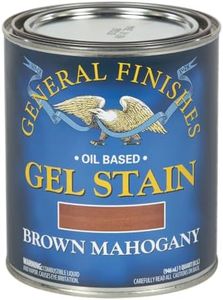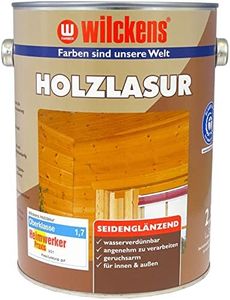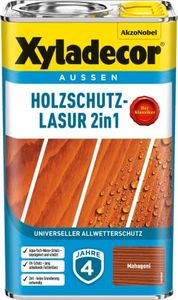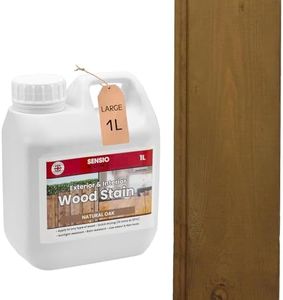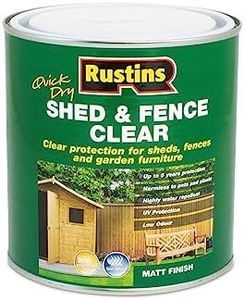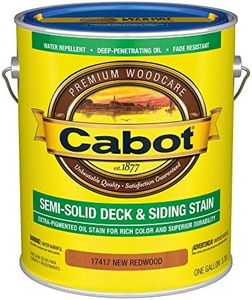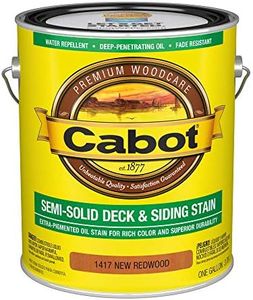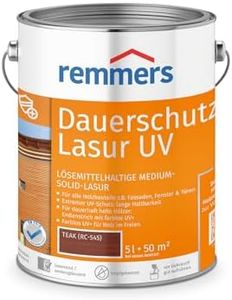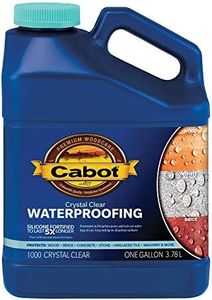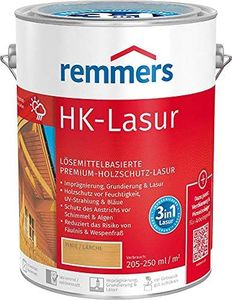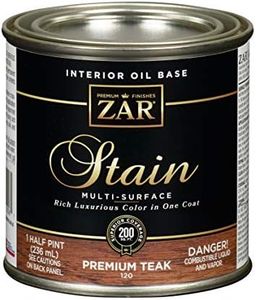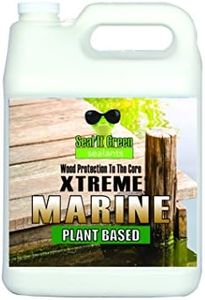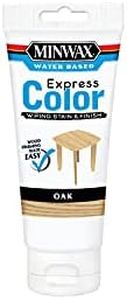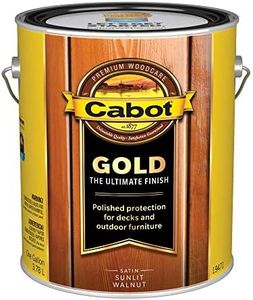We Use CookiesWe use cookies to enhance the security, performance,
functionality and for analytical and promotional activities. By continuing to browse this site you
are agreeing to our privacy policy
10 Best Stain For Fence
From leading brands and best sellers available on the web.Buying Guide for the Best Stain For Fence
Choosing the right stain for your fence is an important step in ensuring both its durability and appearance. The right stain not only enhances the look of the wood but also protects it from weathering, moisture, and UV damage. Since fences are exposed to outdoor elements year-round, it's important to pick a stain that matches your climate, the type of wood you have, and the level of upkeep you're willing to commit to. Understanding the main features of stains will help you make a choice that keeps your fence looking great for years.Type of StainStains generally come in three main types: transparent, semi-transparent, and solid. Transparent stains showcase the wood grain and give a natural look but offer limited protection, making them best for newer or high-quality wood that you want to show off. Semi-transparent stains provide a bit more color while still letting the wood’s texture show through; they strike a balance between appearance and protection. Solid stains offer the most color coverage, hiding much of the wood's grain while providing strong protection against sunlight and weather. If you prefer seeing the wood's natural features and are okay with reapplying more often, go transparent or semi-transparent. If you want easier maintenance and stronger defense against elements, opt for a solid stain.
Oil-Based vs. Water-BasedStains can be oil-based or water-based, each offering different benefits. Oil-based stains penetrate deeply into the wood, offering long-lasting protection and a rich finish, but take longer to dry and may emit stronger odors. Water-based stains dry quicker, are easy to clean up, and are more environmentally friendly but may not last as long as oil-based options. Choose oil-based if you want maximum durability and a traditional look, and you're comfortable with longer drying times. Water-based is ideal if you need easier cleanup and want to finish the job quickly, or are staining in a more humid environment.
UV ProtectionUV protection helps prevent the wood from fading, graying, and deteriorating under sunlight. Not all stains have strong UV blockers, so if your fence is in direct sunlight most of the day, look for a stain that advertises good UV resistance. If your fence is in a shaded or partially shaded area, you may not need the highest level of UV protection, but it can still help extend the life and appearance of the wood.
Mildew and Mold ResistanceSome stains include fungicides or mildew-resistant additives that help prevent the growth of mold and mildew, especially in damp or shady environments. This feature is important if you live in an area with high humidity or frequent rainfall, as it keeps your fence looking clean and helps prevent wood rot. If mold and mildew aren’t major concerns in your climate, this may be less important for you.
Color and OpacityStains come in a wide variety of colors, from natural wood tones to darker shades and even some vibrant hues. Opacity refers to how much of the wood grain shows through the stain, which also ties back to the type of stain you choose. Consider your home’s exterior, landscaping, and personal taste when picking a color. If you want a natural look, go for lighter shades and lower opacity; for a bolder statement or more uniform appearance, choose darker or more opaque stains.
Ease of Application and ReapplicationSome stains are easier to apply than others, either by brush, roller, or sprayer. Generally, water-based stains are simpler for beginners since they clean up with water. Also, consider how easy it is to reapply in the future — some stains allow you to simply clean the fence and apply a new coat, while others require more prep work like sanding or stripping. If you want easy future maintenance, look for stains that require minimal prep between applications.
